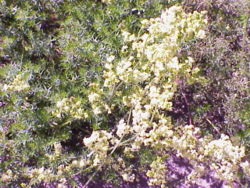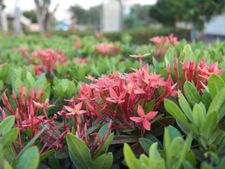| Rubiaceae {{{status}}} Fossil range: {{{fossil_range}}}
|

Lady's Bedstraw (Galium verum)
|
| Plant Info
|
| Common name(s):
|
|
{{{common_names}}}
|
| Growth habit:
|
|
{{{growth_habit}}}
|
| Height:
|
⇕
|
{{{high}}}
|
| Width:
|
⇔
|
{{{wide}}}
|
| Lifespan:
|
⌛
|
{{{lifespan}}}
|
| Exposure:
|
☼
|
{{{exposure}}}
|
| Water:
|
☂
|
{{{water}}}
|
| Features:
|
❀
|
{{{features}}}
|
| Poisonous:
|
☠
|
{{{poisonous}}}
|
| Hardiness:
|
❆
|
{{{hardiness}}}
|
| USDA Zones:
|
|
{{{usda_zones}}}
|
| Sunset Zones:
|
|
{{{sunset_zones}}}
|
|
| Scientific classification
|
| Domain:
|
{{{domain}}}
|
| Superkingdom:
|
{{{superregnum}}}
|
| Kingdom:
|
Plantae
|
| Subkingdom:
|
{{{subregnum}}}
|
| Superdivision:
|
{{{superdivisio}}}
|
| Superphylum:
|
{{{superphylum}}}
|
| Division:
|
Magnoliophyta
|
| Phylum:
|
{{{phylum}}}
|
| Subdivision:
|
{{{subdivisio}}}
|
| Subphylum:
|
{{{subphylum}}}
|
| Infraphylum:
|
{{{infraphylum}}}
|
| Microphylum:
|
{{{microphylum}}}
|
| Nanophylum:
|
{{{nanophylum}}}
|
| Superclass:
|
{{{superclassis}}}
|
| Class:
|
Magnoliopsida
|
| Sublass:
|
{{{subclassis}}}
|
| Infraclass:
|
{{{infraclassis}}}
|
| Superorder:
|
{{{superordo}}}
|
| Order:
|
Gentianales
|
| Suborder:
|
{{{subordo}}}
|
| Infraorder:
|
{{{infraordo}}}
|
| Superfamily:
|
{{{superfamilia}}}
|
| Family:
|
Rubiaceae
Juss.
|
| Subfamily:
|
{{{subfamilia}}}
|
| Supertribe:
|
{{{supertribus}}}
|
| Tribe:
|
{{{tribus}}}
|
| Subtribe:
|
{{{subtribus}}}
|
| Genus:
|
{{{genus}}}
|
| Subgenus:
|
{{{subgenus}}}
|
| Section:
|
{{{sectio}}}
|
| Series:
|
{{{series}}}
|
| Species:
|
{{{species}}}
|
| Subspecies:
|
{{{subspecies}}}
|
|
| [[{{{diversity_link}}}|Diversity]]
|
| {{{diversity}}}
|
| Binomial name
|
{{{binomial}}}
|
| Trinomial name
|
{{{trinomial}}}
|
| Type Species
|
{{{type_species}}}
|
| Genera
|
See text
For a full list, see: List of Rubiaceae genera
|
[[Image:{{{range_map}}}|{{{range_map_width}}}|]]
|
| Synonyms
|
| {{{synonyms}}}
|
 Egyptian Starcluster Pentas lanceolata
File:Luculia gratissima.pngWhite Luculia gratissima
Egyptian Starcluster Pentas lanceolata
File:Luculia gratissima.pngWhite Luculia gratissima
Rubiaceae is a family of flowering plants, variously called the madder, bedstraw, or coffee family. Other common plants included here are gardenia, cinchona, sweet woodruff, partridgeberry, gambier, ixora, and noni. A number of traditionally accepted families (Dialypetalanthaceae, Henriqueziaceae, Naucleaceae, and Theligonaceae) are now incorporated within the Rubiaceae following genetic research by the Angiosperm Phylogeny Group. As now circumscribed, there are about 600 genera and more than 10,000 species in the Rubiaceae.
Subfamilies
The genera are distributed into tribes, and these placed in one of three recognized subfamilies:
- Rubioideae
- Anthospermeae
- Argostemmateae
- Coussareeae
- Craterispermeae
- Danaideae
- Gaertnereae
- Lasiantheae
- Morindeae
- Ophiorrhizeae
- Paederieae
- Perameae
- Psychotrieae
- Rubieae
- Sabiceeae
- Schradereae
- Spermacoceae
- Theligoneae
- Urophylleae
- Virectarieae
|
- Cinchonoideae
- Calycophylleae
- Catesbaeeae
- Naucleeae
- Chiococceae
- Cinchoneae
- Condamineeae
- Coptosapelteae
- Guettardeae
- Hamelieae
- Hillieae
- Isertieae
- Mussaendeae
- Rondeletieae
- Simireae
- Exostema group
|
- Ixoroideae
- Alberteae
- Coffeeae
- Cremasporeae
- Gardenieae
- Hippotideae
- Ixoreae
- Octotropideae
- Pavetteae
- Retiniphylleae
- Sipaneeae
- Vanguerieae
|
Genera
The following genera are listed by Watson and Dallwitz (Delta):
References and external links
Template:Wikispecies

